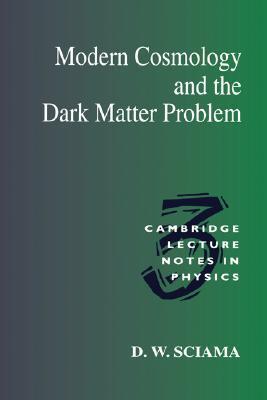

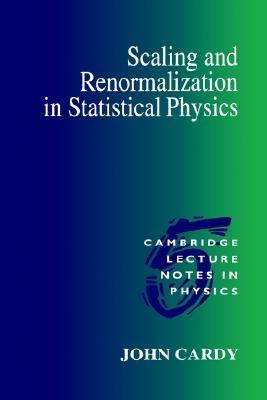
Cambridge Lecture Notes in Physics
Series · 14
books · 1994-2025
Books in series

#3
Modern Cosmology and the Dark Matter Problem
1994
This book shows how modern cosmology and astronomy have led to the need to introduce dark matter in the universe to account for mass. Some of this dark matter is in the familiar form of protons, electrons and neutrons, but most of it must have a more exotic form. The favored, but not the only, possibility is neutrinos of non-zero rest mass, pair-created in the hot big bang and surviving to the present day. After a review of modern cosmology, this book gives a detailed account of the author's recent theory in which these neutrinos decay into photons that are the main ionizing agents in hydrogen and nitrogen in the interstellar and intergalactic medium. This theory, though speculative, explains a number of rather different puzzling phenomena in astronomy and cosmology in a unified way and predicts values of various important quantities such as the mass of the decaying neutrino and the Hubble constant.

#4
Diagrammatica
The Path to Feynman Diagrams
1994
This book provides an easily accessible introduction to quantum field theory via Feynman rules and calculations in particle physics. The aim is to make clear what the physical foundations of present-day field theory are, to clarify the physical content of Feynman rules. The book begins with a brief review of some aspects of Einstein's theory of relativity that are of particular importance for field theory, before going on to consider the relativistic quantum mechanics of free particles, interacting fields, and particles with spin. The techniques learnt in the chapters are then demonstrated in examples that might be encountered in real accelerator physics. Further chapters contain discussions of renormalization, massive and massless vector fields and unitarity. A final chapter presents concluding arguments concerning quantum electrodynamics. The book includes valuable appendices that review some essential mathematics, including complex spaces, matrices, the CBH equation, traces and dimensional regularization. An appendix containing a comprehensive summary of the rules and conventions used is followed by an appendix specifying the full Lagrangian of the Standard Model and the corresponding Feynman rules. To make the book useful for a wide audience a final appendix provides a discussion of the metric used, and an easy-to-use dictionary connecting equations written with different metrics. Written as a textbook, many diagrams, exercises and examples are included. This book will be used by beginning graduate students taking courses in particle physics or quantum field theory, as well as by researchers as a source and reference book on Feynman diagrams and rules.

#5
Scaling and Renormalization in Statistical Physics
1996
This text provides a thoroughly modern graduate-level introduction to the theory of critical behavior. Beginning with a brief review of phase transitions in simple systems and of mean field theory, the text then goes on to introduce the core ideas of the renormalization group. Following chapters cover phase diagrams, fixed points, cross-over behavior, finite-size scaling, perturbative renormalization methods, low-dimensional systems, surface critical behavior, random systems, percolation, polymer statistics, critical dynamics and conformal symmetry. The book closes with an appendix on Gaussian integration, a selected bibliography, and a detailed index. Many problems are included. The emphasis throughout is on providing an elementary and intuitive approach. In particular, the perturbative method introduced leads, among applications, to a simple derivation of the epsilon expansion in which all the actual calculations (at least to lowest order) reduce to simple counting, avoiding the need for Feynman diagrams.

#6
Black Holes Uniqueness Theorems
1996
This timely review provides a self-contained introduction to the mathematical theory of stationary black holes and a self-consistent exposition of the corresponding uniqueness theorems. The opening chapters examine the general properties of space-times admitting Killing fields and derive the Kerr-Newman metric. Heusler emphasizes the general features of stationary black holes, the laws of black hole mechanics, and the geometrical concepts behind them. Tracing the steps toward the proof of the "no-hair" theorem, he illustrates the methods used by Israel, the divergence formulas derived by Carter, Robinson and others, and finally the sigma model identities and the positive mass theorem. The book also includes an extension of the electro-vacuum uniqueness theorem to self-gravitating scalar fields and harmonic mappings. A rigorous textbook for graduate students in physics and mathematics, this volume offers an invaluable, up-to-date reference for researchers in mathematical physics, general relativity and astrophysics.
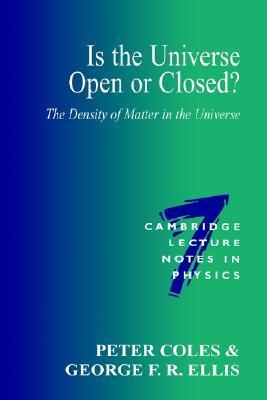
#7
Is the Universe Open or Closed?
The Density of Matter in the Universe
1997
This controversial book examines one of the most fundamental questions of modern cosmology: how much matter is there in the Universe? The authors discuss all the relevant cosmological and astrophysical evidence. They present a 'state-of-the-art' analysis of the observational and theoretical arguments surrounding the existence of dark matter, primordial nucleosynthesis, large-scale structure formation and the cosmic microwave background radiation. In this way, they provide an indispensable introduction to the most exciting recent developments in modern cosmology.Written by two eminent cosmologists, this topical and provocative book will be essential reading for all cosmologists and astrophysicists.

#8
Lie Algebras, Geometry, and Toda-Type Systems
1997
Devoted to an important and popular branch of modern theoretical and mathematical physics, this book introduces the use of Lie algebra and differential geometry methods to study nonlinear integrable systems of Toda type. Many challenging problems in theoretical physics are related to the solution of nonlinear systems of partial differential equations. One of the most fruitful approaches in recent years has resulted from a merging of group algebraic and geometric techniques. The book gives a comprehensive introduction to this exciting branch of science. Chapters 1 and 2 review basic notions of Lie algebras and differential geometry with an emphasis on further applications to integrable nonlinear systems. Chapter 3 contains a derivation of Toda type systems and their general solutions based on Lie algebra and differential geometry methods. The last chapter examines explicit solutions of the corresponding equations. The book is written in an accessible "lecture note" style with many examples and exercises to illustrate key points and to reinforce understanding.

#9
Quantum Chromodynamics and Pomeron
1997
This volume describes the Pomeron, an object of crucial importance in very high energy particle physics. The first chapter looks at historical roots, setting the scene for subsequent chapters, which focus on the derivation and study of the Pomeron that emerge within perturbative Quantum Chromodynamics (QCD). A simple toy model is first used to illustrate the basic ideas behind the construction of the Pomeron and leads naturally to the more realistic case of QCD. The reggeized gluon is introduced and used to build the Pomeron of perturbative QCD. The dynamical nature of the Pomeron is then investigated. The role of the Pomeron in small-x deep inelastic scattering and in diffractive scattering is examined in detail. The volume concludes with a discussion of the color dipole approach to high energy scattering and the explicit role of unitarity corrections.

#10
Self-Organized Criticality
Emergent Complex Behavior in Physical and Biological Systems
1998
Self-organized criticality (SOC) maintains that complex behavior can develop spontaneously in certain multi-body systems whose dynamics vary abruptly. This is a clear and concise introduction to the field of self-organized criticality, and contains an overview of the main research results. The author begins with an examination of what is meant by SOC, and the systems in which it can occur. He then presents and analyzes computer models to describe a number of systems, explaining the different mathematical formalisms developed to understand SOC. The final chapter assesses the impact of this field of study, and highlights some key areas of new research. The author assumes no previous knowledge of the field, and the book contains several exercises. It will be ideal as a textbook for graduate students taking physics, engineering, or mathematical biology courses in nonlinear science or complexity.
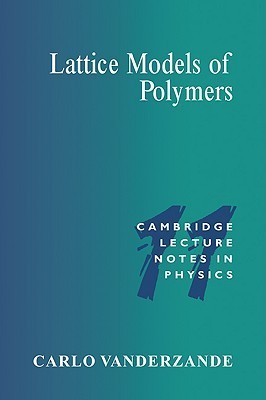
#11
Lattice Models of Polymers
1998
This is a comprehensive introduction to lattice models of polymers, an important topic both in the theory of critical phenomena and the modeling of polymers. The first two chapters introduce the basic theory of random, directed and self-avoiding walks. The book then goes on to develop and expand this theory to explore the self-avoiding walk in both two and three dimensions. Following chapters describe polymers near a surface, dense polymers, self interacting polymers and branched polymers. The book closes with discussions of some geometrical and topological properties of polymers, and of self-avoiding surfaces on a lattice. The volume combines results from rigorous analytical and numerical work to give a coherent picture of the properties of lattice models of polymers. This book will be valuable for graduate students and researchers working in statistical mechanics, theoretical physics and polymer physics. It will also be of interest to those working in applied mathematics and theoretical chemistry.
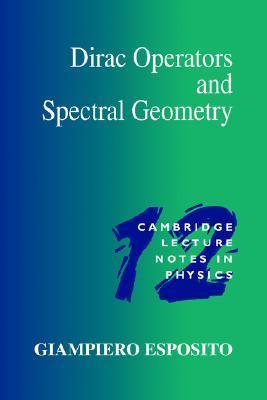
#12
Dirac Operators and Spectral Geometry
1998
The Dirac operator has many useful applications in theoretical physics and mathematics. This book provides a clear, concise and self-contained introduction to the global theory of the Dirac operator and to the analysis of spectral asymptotics with local or nonlocal boundary conditions. The theory is introduced at a level suitable for graduate students. Numerous examples are then given to illustrate the peculiar properties of the Dirac operator, and the role of boundary conditions in heat-kernel asymptotics and quantum field theory. Topics covered include the introduction of spin-structures in Riemannian and Lorentzian manifolds; applications of index theory; heat-kernel asymptotics for operators of Laplace type; quark boundary conditions; one-loop quantum cosmology; conformally covariant operators; and the role of the Dirac operator in some recent investigations of four-manifolds. This volume provides graduate students with a rigorous introduction and researchers with a invaluable reference to the Dirac operator and its applications in theoretical physics.

#14
Intro Chaos Nonequilib Stat Mechan
1999
This work is an introduction to the applications in nonequilibrium statistical mechanics of chaotic dynamics, and also to the use of techniques in statistical mechanics important for an understanding of the chaotic behaviour of fluid systems. The fundamental concepts of dynamical systems theory are reviewed and simple examples are given. Advanced topics including SRB and Gibbs measures, unstable periodic orbit expansions, and applications to billiard-ball systems, are then explained. The text emphasises the connections between transport coefficients, needed to describe macroscopic properties of fluid flows, and quantities, such as Lyapunov exponents and Kolmogorov-Sinai entropies, which describe the microscopic, chaotic behaviour of the fluid. Later chapters consider the roles of the expanding and contracting manifolds of hyperbolic dynamical systems and the large number of particles in macroscopic systems. Exercises, detailed references and suggestions for further reading are included.
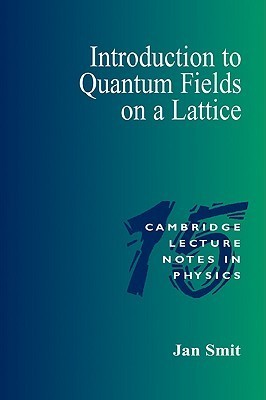
#15
Introduction Quantum Fields Lattice
2002
This book provides a concrete introduction to quantum fields on a a precise and non-perturbative definition of quantum field theory obtained by replacing the space-time continuum by a lattice. Topics covered include quark confinement, chiral symmetry breaking in QCD, quantized non-abelian gauge fields, scaling and universality. The author also discusses the results of simulations on computers.
#15
Exact S-Matrices
2025
#16
Disordered Polymers
2004
Authors

Jeffrey R. Forshaw
Author · 1 book
Jeff Forshaw is a professor at the School of Physics and Astronomy, University of Manchester
George Ellis
Author · 2 books
Librarian Note: There are more than one author in the Goodreads database with this name.
